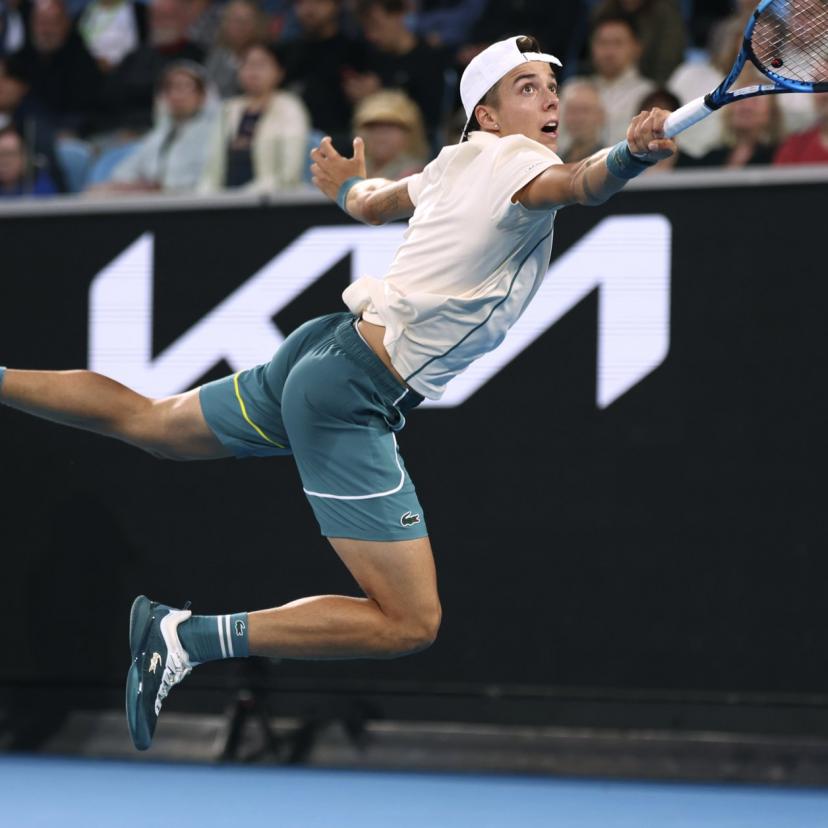A Frenchman lifts the Australian crowd out of their seats. He wears his cap backwards. He wears Lacoste. He moves with style and agility. He punishes with a stinging two-handed backhand.
It’s not Sebastian Grosjean, it’s Arthur Cazaux.
The Montpellier native, just 21 years old, drops his racket, celebrates in the style of Carmelo Anthony, as if it were a three-pointer to win at the buzzer. A tattoo of a snake runs along his forearm. It represents the “mamba mentality” of Kobe Bryant, his idol.
He entered the main draw as a guest and, after a great five-set win over Laslo Djere, he has just beaten Holger Rune, the big star of his generation.
Cazaux is a counter-puncher by nature. He slides around the court like clay. His heavy, cross-court topspin to the back is interspersed with powerful flat shots down the lines. He brings his opponents to the net with elegant drops, then leaves them frozen in resignation with precise, Andy Murray-like lobs.
His physical power is the first thing that catches the eye. Long rallies from the back of the court don’t bother him, he seems to enjoy them. He covers his drive and his backhand with the same effectiveness. There are no gaps. With his legs he always seems to be in a good position for impact.
The Frenchman believes his handball background has a lot to do with that:
“I played handball for seven years, until I was 11, and that helped me a lot. The speed, the agility, the endurance. I worked very hard during those years, and it’s something that has helped me a lot in getting into tennis.”
Cazaux played for one of the best junior teams in France, but at the age of 11 he had to make a decision, because tennis also demanded a lot of his time.
“I chose tennis because you are alone. The challenge of carrying all the pressure alone is what attracted me”.
His physical abilities shone through at the Next Gen Finals Basecamp, where Cazaux won the vertical jump, 10-metre sprints, the 5-0-5 test, and the star drill.
The wild celebrations of a young Jo-Wilfried Tsonga come as distant memories. And the certainties of future Grand Slams that were in the backpack of a teenager Richard Gasquet.
Or the delirium and amazement generated by the talented Gael Monfils in every stadium he stepped foot in.
So far in the 21st century, French tennis has been all promise. The nostalgia at the memory of the last great celebration, that of Yannick Noah at Roland Garros 1983, is becoming increasingly distant.
Grosjean, Arnaud Clément, Paul-Henri Mathieu, Nicolas Mahut, Michael Llodra, Gilles Simon, Gasquet, Monfils, Tsonga, even the almost retired Lucas Pouille. Talents who have passed. With that finesse, that aesthetic and technical tennis.
In Australia there is a halo of revolution in the air. Of French Revolution. The slogan is to overcome the threshold of illusions. To cross that frontier.
At the head of the troop are names like Arthur Fils, Luca Van Assche and Arthur Cazaux.
The battle has only just begun and could last for years.
The goal is clear: to win a Grand Slam title again among the men.
They don’t want to read history, they want to write it.







